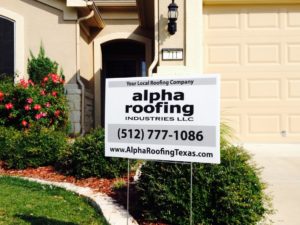 When you take a glance at your roof, you may not notice much besides the shingles. However, a residential roof consists of several components that work together to create an integrated system. The failure of any of these components can result in a roof leak or structural damage that can be expensive to repair.
When you take a glance at your roof, you may not notice much besides the shingles. However, a residential roof consists of several components that work together to create an integrated system. The failure of any of these components can result in a roof leak or structural damage that can be expensive to repair.
Residential Roofing: A Breakdown of Your Parts
What Are the Major Components of a Residential Roof?
Licensed roofing companies know that roofs are engineered to match the conditions that are specific to the weather in the area. For example, in Austin and Central Texas, it would be overkill to engineer a roof that could withstand the wind speeds generated by a strong hurricane, while homeowners along the Texas coast do not need to worry about ice dams forming on their roofs. Therefore, the following list discusses the components that a typical Austin roofer would consider the essential parts of a residential roof.
1. Roof Frame: The roof frame is the first roofing component to be erected during the construction of a home. The framework consists of trusses, rafters, and joists.
2. Decking: The decking consists of panels of plywood that are attached to the frame.
3. Underlayment: Underlayment or felt is connected to the decking. Underlayment assists in creating a watertight roof prevents resin released by the decking from damaging the shingles, helps eliminate bumps between the plywood panels, and contributes to the roof’s resistance to fire.
4. Flashing: Flashing is used around chimneys and other roof penetrations, including roof vents, skylights, and plumbing vents. It can also be used in roof valleys and where the roof meets a wall. The purpose of flashing is to create a tight seal that will prevent water from draining around the roof penetration or joint.
5. Drip Edge: The goal of the drip edge is to direct runoff from the roof into your gutters. At eaves, drip edge is typically installed beneath the underlayment, but along the sides, it is usually installed on top of the underlayment.
6. Shingles: Asphalt shingles are an extremely popular choice that are available in a wide range of styles and colors. Metal shingles are becoming more common; they have a very long life, and they can be found in styles that mimic the appearance of many other types of roof coverings. Shingles are typically the next component that a roof company will install when constructing or replacing a roof.
7. Fascia Boards: Fascia boards are often mistaken for purely decorative trim pieces. However, these boards, which lie under the drip edge and run parallel to the ground, protect the home’s interior as well as the decking and frame against water penetration.
8. Gutters: Gutters are usually attached to the fascia boards. Gutters are troughs to collect runoff from the roof and deliver it to downspouts for dispersal. Missing, leaking or clogged gutters allow the runoff to cascade down the exterior of your home, potentially damaging your siding and creating problems for your foundation. Furthermore, clogged gutters can allow water to be forced under the edges of your roof, which often leads to damaged decking and frame components.
9. Soffits: Soffits are attached to the underside of the eaves. There are two primary functions of soffits, which are to protect the ends of roofing components that extend beyond the exterior wall and to assist in attic ventilation.
If you want to keep small issues with any of these roof components from developing significant problems, you should consider having a reputable local contractor conduct an annual roof inspection. Roofing professionals are familiar with the anatomy of every style of roof and know how the different components can potentially fail.
Alpha Roofing: The Roof Contractor Austin Homeowners Trust
Alpha Roofing is an award-winning provider of residential and commercial roofing services to customers in most parts of Central Texas. We install gutters, asphalt shingles, metal roofs, siding, flashing, flat roofs, and commercial roofs, and we repair roofs, chimneys and flashing. We also offer moss and debris removal, emergency roof repairs, metal fabrication, storm damage inspections, and preventive maintenance plans. We have an impeccable reputation that is based on the quality of our work, our dedication to customer service, our integrity and our reasonable prices. To receive a free quote at no obligation to you, submit the online request form or call our office at 512-777-1086.
